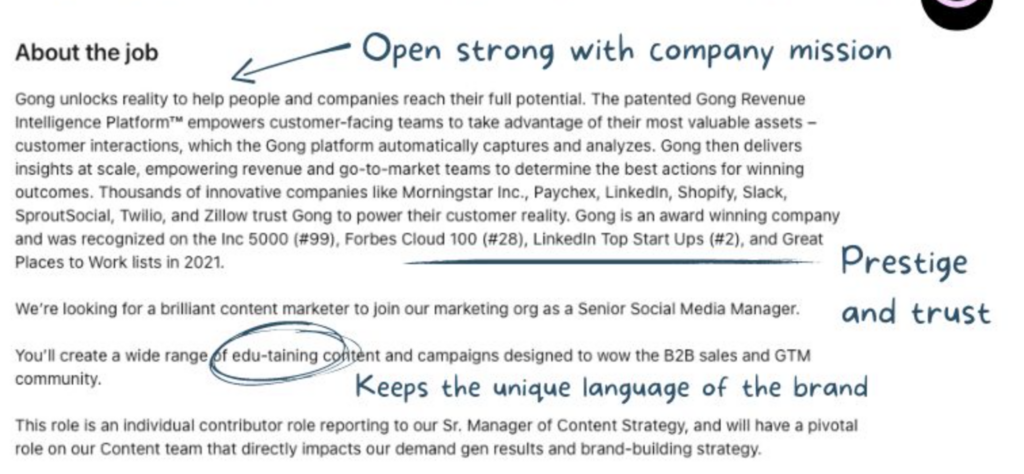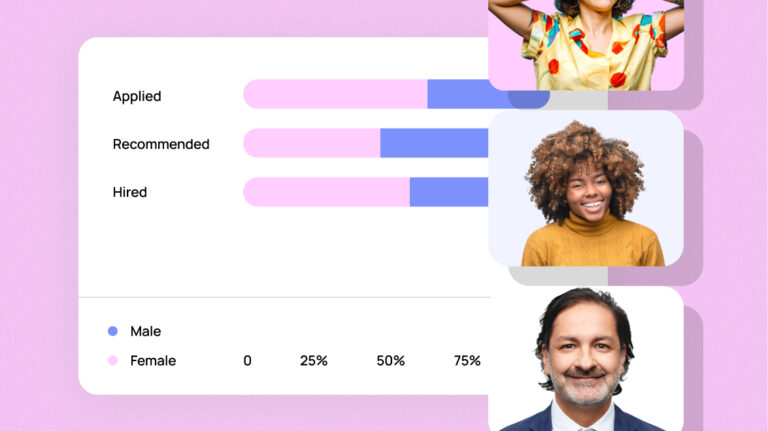How to write good job ads, optimised for candidate experience


We agree with Katrina Collier: Recruitment isn’t broken, per se. It needs a bit of work, sure, but in the midst of the Great Resignation, dedicated talent acquisition managers all over the world are doing some of their best work. They’re finding top talent and helping businesses succeed.
Despite this, we can say that candidate experience is certifiably broken. Ghosting rates are up somewhere around 450% since the start of the pandemic. 65% people say they rarely receive notice of their application status (Lever), and 60% of people say they have bailed on a job application due to its length or complexity.
Why candidate experience is important
Many mid-to-large sized companies spend in excess of $200,000 per year on sourcing and advertising (assuming a hiring rate of fifty people per year). Few invest in candidate experience. We tend to overlook the fact that the candidate journey from application to offer (or rejection) is just as important for the health of a recruitment funnel, over the long term, as good ads or recruitment strategies.
Good candidate experience, put simply, is your best chance at securing the talent you want. In the wake of the Great Reshuffle, employees have the power to choose when and where they work, and they know it. If you can’t reach them and woo them in a reasonable time frame, you’re at a supreme competitive disadvantage. They’re here today, gone tomorrow. That means that multi-round interview funnels and tedious psychometric games aren’t going to cut it anymore. Today’s candidate wants speed, perks, and flexibility. Your experience should be designed with this in mind.
There are a lot of ways candidate experience might be improved – this article offers some tips, including advice on a term we like to call the Gucci principle.
One easy place to start is with your job ads.
How to write a good job ad
Good job ads are concise and well-formatted. They put employee value proposition up front. They discuss the vision and purpose of a role, and not just day-to-day responsibilities. They avoid the term ‘competitive salary’ – in fact, they disclose salary ranges. They’re not necessarily short, either. Anyone who tells you that a job ad must be short to be good does not understand the anatomy of an advertisement.
Here are our top tips.
1. Make sure the spelling and grammar in your job ad is perfect, throughout
This seems like a minor point, but good spelling, grammar, and sentence structure is essential for your employer brand. It’s a matter of perception. Poor writing casts doubt on the legitimacy of your brand, and on your capabilities in general – after all, if you can’t write a clean job ad, how can the candidate be sure you can do other, more important things, correctly?
Have someone in your marketing team cast their eye over your ad before it goes out. Proof-reading should always be a part of your customer outreach. If you don’t have a marketer on which to rely, consider investing in editing software like Grammarly.
2. Keep the unique language of your brand
Funky company names are in vogue. Just look at ours. Because we’re called Sapia, we refer to our team (and even our customers) as Sapians. Therefore, we do the same with our job ads. It creates branding consistency, and works as an unconscious primer, suggesting to candidates that they’re joining a well-knit, stable, and purpose-oriented team.
The same goes for language. If you’ve adopted or created certain words to make your brand stand out, they should also be used to make your job ad stand out. Look at this example from Gong: They tell the candidate that they’ll be creating edu-taining content. That’s a lot more interesting than “you’ll be writing content that is both educational and entertaining.” Had they chosen the latter sentence, you’d doubt their credibility, because that sentence is not remotely entertaining.

Or take this example from one of our own job ads. You might say that using a curse word (oh dear me!) in a job ad is inappropriate, but we don’t. We’re Sapians, and that makes us passionate humans. We understand that writing the way you speak is the quickest way to build rapport. Tell us that you don’t get that impression from this paragraph.
3. Clear categorisation and formatting of sections
A job ad doesn’t need to be short, but it should be formatted for scanning. Candidates should be able to easily read it, extract the main points, and make the call to apply, all within minutes. We like the following job ad section structure:
- Perks and benefits
- Responsibilities
- Qualifications
Each section can be as long as you need it to be (within reason), but it should also be set out in dot points. Easier to read, easier to digest. Many are the job ads that set out position duties and benefits in great big walls of text. Go with dot points, like Gong has, and you’ll stand out.
4. Make it as easy as possible to apply
Depending on the platform you use, it can be difficult to control how candidates enter your funnel. Regardless, you can make it easier by clearly sign-posting the action you expect them to take. If it’s a LinkedIn EasyApply button, great – but don’t confuse candidates by asking them, at the bottom of the ad, to email their CVs to you. This happens a lot.
Make sure you have a single call-to-action, and make it clear. Add it to the top and bottom of your ad.
You know what they say about first impressions? That’s why it’s so critical to get your job ads right. Check out this post on LinkedIn for more tips on writing the perfect job ad.


